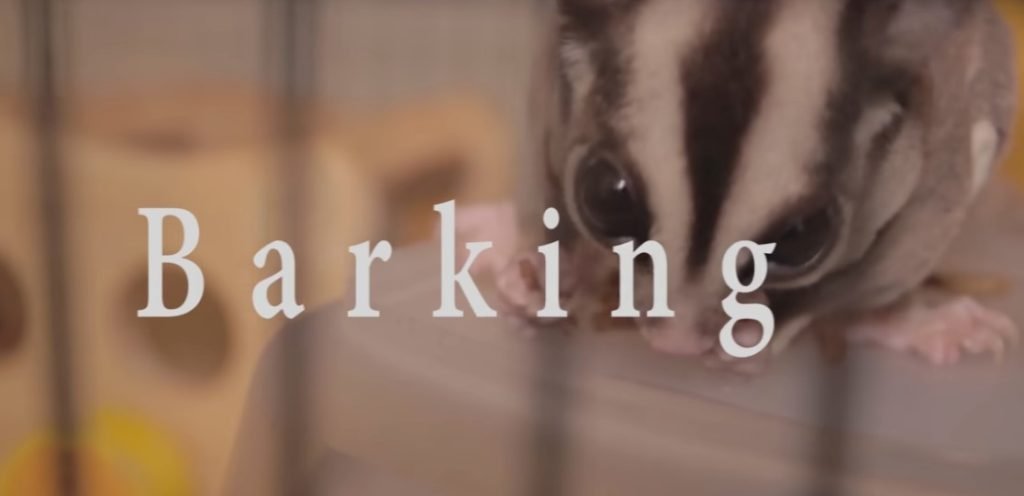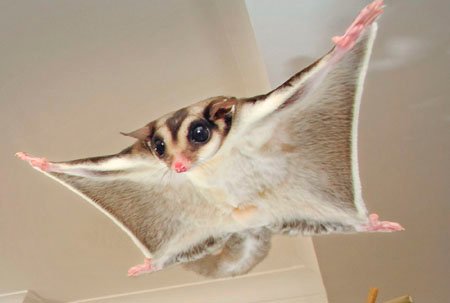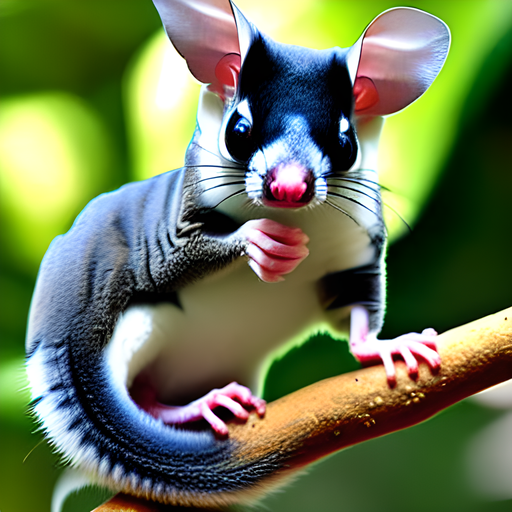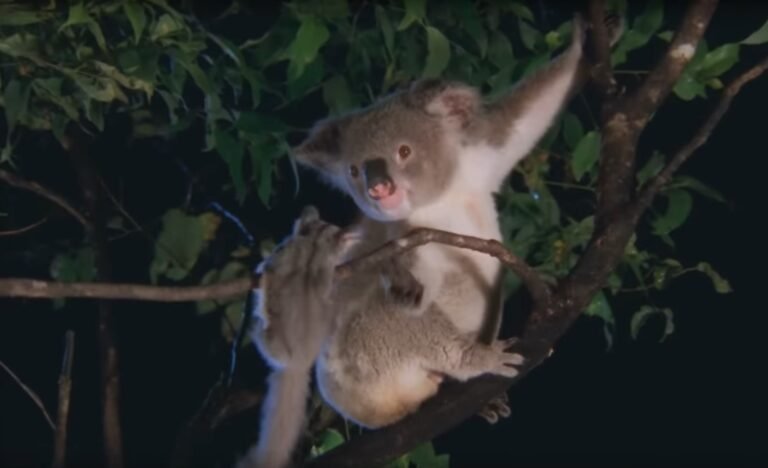Understanding Sugar Glider Purring VS Hissing Sound Guide
Did you know that sugar gliders have their own unique language? These adorable marsupials may not speak our human tongue, but they communicate through a fascinating array of sounds. Understanding these sounds is key to deciphering their behavior and building a stronger bond with your furry friends.
From purring to hissing, each sound carries its own meaning in the world of sugar glider communication. By learning about these vocalizations, you can unlock the secrets behind their moods, needs, and desires. Whether it’s a soft purr indicating contentment or a sharp hiss signifying fear or aggression, decoding their language will help you respond appropriately.
So why wait? Let’s dive into the captivating realm of sugar glider sounds together! In this guide, we’ll explore the understanding sugar glider purring vs hissing sound guide. Get ready to enhance your understanding of these delightful creatures and take your relationship with them to new heights.
Let’s embark on this exciting journey into the enchanting world of sugar glider communication.
Exploring Sugar Glider Noises: Purring, Hissing, Barking, and Chirping:
Purring: A Sign of Contentment
Purring is one of the most heartwarming sounds you’ll hear from your pet sugar glider. It’s a gentle, rhythmic noise that they make when they feel safe and comfortable. Imagine it as their way of saying, “I’m happy!” When your furry friend purrs, it’s a clear indication that they trust you and enjoy your company. Soothing and melodic, this sound can create a sense of calmness in both you and your glider.
Hissing: A Defensive Warning
On the other hand, hissing is quite the opposite of purring. When sugar gliders feel threatened or uncomfortable, they emit a sharp hissing sound to express their displeasure. It serves as a warning to potential threats or intruders that they should back off. If you notice your glider hissing at you or another person or animal nearby, it’s essential to give them some space and avoid any sudden movements that might escalate their fear.
Barking: Sounding the Alarm
Yes, sugar gliders can bark too! Though not as common as purring or hissing, barking is an important part of their communication repertoire. When startled or alarmed by something unusual in their environment, such as loud noises or unfamiliar scents, sugar gliders may let out short bursts of high-pitched barks. Think of it like an alarm call to alert others in their group about potential danger. This behavior helps establish territory boundaries and ensures the safety of the entire colony.

Chirping: Social Interaction and Bonding
When sugar gliders want to engage with each other socially or bond with their human companions, they often use chirping sounds. These high-pitched noises are similar to bird chirps but with a distinct glider twist.
Decoding the Meaning Behind Sugar Glider Sounds:
Understanding the Language of Sugar Gliders
Sugar gliders may be small, but they have a big voice! These adorable creatures communicate through a variety of sounds, each with its own unique meaning and intention. To truly understand what your sugar glider is trying to tell you, it’s important to decode their sounds and pay attention to their body language. Let’s dive into this guide on understanding sugar glider purring versus hissing sounds.
Context is Key
Just like humans, sugar gliders use different sounds for different situations. By understanding the context in which these sounds are made, you can accurately decipher their messages. For example, when your sugar glider emits a soft purring sound while cuddling up next to you, it’s a sign that they feel content and safe in your presence. On the other hand, if you hear a sharp hissing sound during playtime or when your glider feels threatened, it’s crucial to recognize that they are expressing fear or aggression.
Non-Verbal Cues Matter
While vocalizations provide valuable insight into your sugar glider’s emotions, paying attention to non-verbal cues is equally important for interpretation. Keep an eye out for body language signals such as flattened ears or raised fur along the spine. These signs can help confirm whether the purring or hissing sound is one of joy or anxiety.
Becoming Fluent in Sugar Glider Speak
Becoming familiar with the various vocalizations of sugar gliders will enable you to respond appropriately and strengthen your bond with these charming creatures. Here are some common sounds and their meanings:
- Purring: A gentle vibrating noise typically indicates contentment and relaxation.
- Hissing: A sharp hiss often signifies fear, aggression, or discomfort.
Interpreting Nighttime Noises: Crabbing and Sneezing in Sugar Gliders

Understanding Crabbing in Sugar Gliders
Sugar gliders can sometimes make unusual sounds that may leave you wondering what’s going on. One of these sounds is known as crabbing. Crabbing refers to the aggressive hissing sound made by scared or threatened sugar gliders at night.
Crabbing is a defense mechanism used by sugar gliders when they feel threatened or cornered. It’s their way of warning potential predators or perceived threats to stay away. The sound itself can be quite startling if you’re not familiar with it, resembling a mixture of hissing and growling.
If you hear your sugar glider crabbing at night, it’s important not to panic. Instead, try to identify the source of their fear or discomfort. Common triggers for crabbing include sudden movements, loud noises, unfamiliar scents, or even the presence of other animals nearby.
To help calm your sugar glider down when they are crabbing, consider the following tips:
- Approach them slowly and avoid making sudden movements.
- Speak softly and reassuringly to let them know you mean no harm.
- Offer treats or favorite toys as a distraction from the perceived threat.
- Create a safe environment by removing any potential stressors from their surroundings.
Understanding Sneezing in Sugar Gliders
Another nighttime noise that sugar glider owners may encounter is sneezing. While occasional sneezing can be normal for these small marsupials, excessive or persistent sneezing may indicate underlying health issues.
Sneezing in sugar gliders can be caused by respiratory problems such as infections or allergies. If your pet frequently sneezes during nighttime activities, it’s essential to monitor their overall health closely.
Here are some steps you can take if your sugar glider is experiencing frequent sneezing:
Mother and Baby Communication: Singing and Chirping in Sugar Gliders:
Sugar glider mothers sing soft lullabies to soothe their joeys (baby sugar gliders).
Picture this: a cozy nest inside a tree hollow, where a mother sugar glider gently cradles her precious joey. As night falls, she begins to sing a sweet lullaby, filling the air with soothing melodies. These maternal songs serve as more than just a bedtime ritual; they are an essential form of communication between mother and baby.
The soft tunes emitted by female sugar gliders have a calming effect on their offspring. Just like humans singing lullabies to their babies, these musical serenades help create a sense of security and comfort for the little ones. The gentle vibrations of the mother’s voice resonate within the nest, creating an atmosphere of warmth and affection.
Chirping from joeys is a way to communicate with their mothers and siblings.
But communication in the sugar glider world is not one-sided. Joeys also have their own unique way of expressing themselves – through chirping! These tiny creatures emit high-pitched chirps that serve as their primary means of communication with both their mothers and siblings.
When hungry or in need of attention, joeys will let out short, sharp chirps to get their mother’s attention. It’s their way of saying, “Hey mom, I’m here!” Similarly, when playing or showing affection towards each other, sugar glider siblings engage in playful chattering sessions filled with joyful chirps.
Understanding maternal singing and joey chirping strengthens the bond within sugar glider families.
The power of these vocalizations goes beyond mere sound waves; it strengthens the bond within sugar glider families. By understanding and responding to each other’s songs and chirps, mothers and joeys develop trust and intimacy that lasts a lifetime.
Addressing Behavioral Issues: Barking and Singing in Sugar Gliders
Barking: What Does It Mean?
Barking in sugar gliders is not as cute as it sounds. It can actually indicate various behavioral issues that need to be addressed. When your furry friend starts barking, it’s important to understand the reasons behind this behavior.
- Stress, Fear, or Territorial Disputes: Barking can be a sign of stress or fear in sugar gliders. They might feel threatened by something in their environment or by other gliders. Territorial disputes among gliders can also lead to barking episodes.
- Identifying Triggers: To address barking issues, you first need to identify the triggers that are causing stress or fear in your sugar glider. Is it a certain noise, a particular object, or the presence of another glider? Observing their behavior closely will help you pinpoint the triggers.
- Providing Appropriate Environmental Enrichment: Once you’ve identified the triggers, it’s time to provide your sugar glider with appropriate environmental enrichment. This could include adding hiding spots, climbing structures, and toys to keep them mentally stimulated and reduce stress levels.
Singing: Loneliness Calling Out
If you hear your sugar glider singing, don’t worry—they’re not auditioning for a talent show! Singing is actually a behavior often observed in lone sugar gliders seeking companionship.
- Lone Gliders Seek Companionship: Sugar gliders are social creatures and thrive on companionship. When they find themselves alone without a fellow glider to interact with, they may start singing as a way of calling out for company.
- Reducing Excessive Singing Behavior: The best way to address excessive singing behavior is through proper socialization of your sugar glider. Introduce them to another compatible glider to provide the companionship they need.
Conclusion
Understanding sugar glider sounds is crucial for pet owners to effectively communicate and respond to their furry companions. By exploring the various noises sugar gliders make, such as purring, hissing, barking, and chirping, we gain valuable insights into their behaviors and emotions.
Decoding the meaning behind these sounds allows us to better interpret what our sugar gliders are trying to communicate. Whether it’s expressing contentment through purring or signaling aggression through hissing, being able to understand these vocalizations helps foster a stronger bond between humans and these adorable marsupials.
Nighttime noises like crabbing and sneezing in sugar gliders can sometimes be misunderstood. However, with a deeper understanding of these sounds, we can differentiate between normal behavior and potential health issues that may require attention from a veterinarian.
Mother and baby communication is another fascinating aspect of sugar glider sounds. The singing and chirping between mother and joey play a vital role in bonding and ensuring the well-being of the young ones.
Addressing behavioral issues in sugar gliders becomes easier when we recognize specific vocalizations like barking or singing. These sounds often indicate distress or territoriality, prompting us to take appropriate action to alleviate any potential problems.
In conclusion, learning about sugar glider sounds provides essential knowledge for nurturing a harmonious relationship with these captivating creatures. By paying attention to their unique vocalizations, we can better meet their needs and ensure their overall happiness.
To deepen your understanding of sugar glider sounds further, continue exploring reputable sources on this topic. Consider consulting experienced pet owners or seeking guidance from veterinary professionals who specialize in exotic animals. Remember that every individual sugar glider may have its own distinct set of vocalizations, so observing your pet’s behavior closely will help you build an even stronger connection.
FAQs
1.How can I tell if my sugar glider is purring?
Purring in sugar gliders is often accompanied by a vibrating sensation when you hold them. They may make soft, rhythmic sounds that resemble a cat’s purring. Observing these physical and auditory cues can help you identify if your sugar glider is purring.
2.Why do sugar gliders hiss?
Hissing in sugar gliders typically indicates feelings of fear, aggression, or discomfort. It serves as a warning to potential threats or unwanted interactions. If your sugar glider starts hissing, it’s essential to assess the situation and ensure their safety and well-being.
3.Are there any health concerns associated with sneezing in sugar gliders?
Occasional sneezing in sugar gliders is normal and helps clear their respiratory system. However, persistent or frequent sneezing could be a sign of an underlying health issue such as respiratory infection or allergies. Consulting a veterinarian is advisable if you notice excessive sneezing in your pet.







